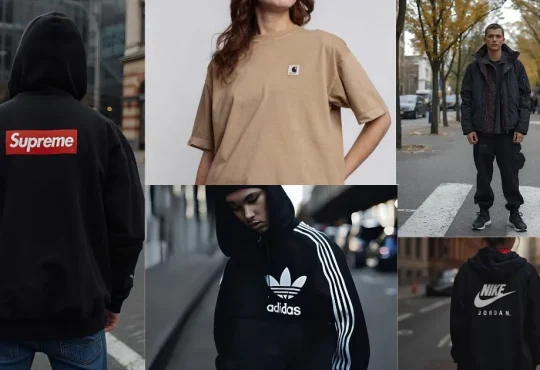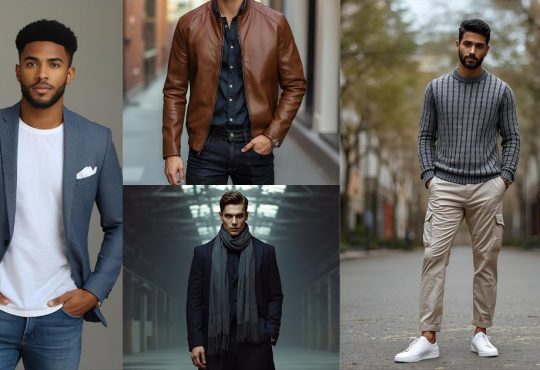
Global fashion and lifestyle scenes are no longer dominated solely by established Western giants. In recent years, local brands from regions once considered fashion underdogs have emerged as influential players on the world stage. These brands are rewriting the rules of style, sustainability, and identity, proving that authenticity and innovation can travel far beyond their home markets. Whether through streetwear rooted in cultural pride, artisanal craftsmanship reimagined for modern consumers, or digital-first strategies that connect directly with global audiences, these homegrown labels are reshaping what it means to be international.
The Rise of Local Creativity in a Global Market
Globalization once meant a flood of international brands entering every market, leaving local names struggling for visibility. Today, that narrative has flipped. Local designers are taking inspiration from their own cultural heritage and blending it with global trends to create something entirely new. Social media, e-commerce platforms, and a rising consumer appetite for authenticity have powered this shift.
What has changed most is perception. Local brands are no longer viewed as alternatives to international labels but as direct competition. Across fashion districts in cities such as Seoul, Manila, Lagos, and São Paulo, a creative renaissance is unfolding. Designers are creating pieces that reflect cultural narratives and connect with a global audience seeking individuality and authenticity in fashion.
The rise of local brands is not just a trend but a cultural correction. Consumers now seek products that carry a sense of place and purpose. As a result, brands that once operated within local markets are now shipping globally, walking the runways of Paris, or collaborating with household names once thought untouchable.
The Power of Cultural Identity in Design
At the heart of many successful local brands is cultural storytelling. Instead of trying to emulate Western aesthetics, these designers celebrate what makes their culture unique. The result is fashion that feels fresh, unapologetically personal, and deeply rooted in history.
Take, for example, South Korea’s streetwear explosion. Brands like ADER Error, Andersson Bell, and Wooyoungmi have gained cult followings around the world for their distinctive blend of minimalism, irony, and technical precision. They reinterpret traditional Korean elements through modern design, creating collections that look just as at home in Seoul’s Garosugil as they do in New York or Paris.
African fashion labels such as Thebe Magugu from South Africa and Orange Culture from Nigeria redefine luxury through the use of local craftsmanship, textiles, and cultural narratives. Their work challenges long-held stereotypes and presents a more genuine reflection of their regions. Each piece serves as an expression of identity, transforming fashion into a medium for sharing culture with the world.
Technology: The Game-Changer for Local Brands
Technology has become a great equalizer. A decade ago, international expansion required massive infrastructure and global retail partners. Today, a single viral TikTok video or Instagram post can catapult a small local brand into global recognition overnight.
Platforms like Shopify and Etsy have made it easier for artisans and small designers to sell directly to global consumers. Digital marketing tools enable local businesses to target international audiences without the need for physical stores. This has led to a rise in “digital-native” local brands that operate globally from day one.
Consider how the Philippine brand Aranáz, known for its intricately handwoven bags, has gained attention from celebrities and fashion editors around the world. Through social media and online features, the brand showcased the beauty of Filipino craftsmanship, transforming what was once a local tradition into a luxury statement.
Technology has also enabled local collaborations that were once unimaginable. Virtual showrooms, online fashion weeks, and cross-border influencer campaigns have given local brands a seat at the global table. With these tools, designers from anywhere can share their creations with audiences everywhere.
Sustainability and Ethical Production as Core Values
In a time marked by growing awareness of environmental and ethical issues, local brands hold a distinct advantage. Many follow the principles of slow fashion, creating limited collections, preserving traditional craftsmanship, and prioritizing quality rather than mass production.
For instance, India’s Raw Mango elevates handwoven textiles through modern silhouettes, preserving local craft traditions while appealing to global sensibilities. Similarly, Indonesia’s Sejauh Mata Memandang promotes sustainable production by working with artisans and using eco-friendly materials. These practices resonate with international audiences who value transparency and sustainability.
What makes these brands particularly compelling is that their sustainability is not performative. It’s woven into their DNA. Many of them are born out of communities where resourcefulness and craftsmanship are cultural norms. This authenticity sets them apart from larger global brands, which often retrofit sustainability into their operations.
Breaking into the Global Scene: From Local Streets to Global Runways
The leap from local recognition to international acclaim often comes through a mix of exposure, timing, and bold creativity. Fashion weeks in Tokyo, Copenhagen, and Lagos have become platforms where emerging designers can showcase their work alongside global veterans.
For example, Tokyo-based label Doublet won the LVMH Prize for its innovative blend of humor and craftsmanship. At the same time, Marine Serre’s rise from Paris underground circles to fashion royalty shows how local energy can translate into worldwide appeal. Similarly, Filipino designer Carl Jan Cruz has quietly built a cult following in Europe through his textured, handcrafted pieces that merge nostalgia with modern tailoring.
These success stories demonstrate that the path to global recognition doesn’t necessarily run through traditional fashion capitals like Paris or Milan. Instead, local fashion weeks, cultural festivals, and online showcases are now launching pads for designers to reach global audiences.
Regional Highlights: Local Brands Going Global
Asia-Pacific: Redefining Modern Fashion
Asia has become a powerhouse of creativity. Beyond K-fashion and J-fashion, countries like the Philippines, Thailand, and Indonesia are producing world-class talent.
- BENCH and Penshoppe (Philippines): Once local retail staples, they now collaborate with international celebrities and influencers.
- Gentle Monster (South Korea): A prime example of a brand that transformed eyewear into an art form. Its avant-garde stores and daring designs have captured the imagination of consumers worldwide.
- Charles & Keith (Singapore): This once-local footwear brand now operates globally, known for offering sophisticated, trend-conscious designs at accessible prices.
Africa: Heritage Meets Innovation
African designers are reclaiming their narratives through vibrant design and contemporary storytelling.
- Maxhosa Africa (South Africa): Known for its colorful knitwear inspired by Xhosa beadwork patterns, it’s a favorite among fashion insiders.
- Tongoro (Senegal): A digital-first brand praised by Beyoncé, representing African artistry with global appeal.
- Lisa Folawiyo (Nigeria): Famous for her hand-embellished Ankara fabrics, blending traditional techniques with modern aesthetics.
Latin America: Vibrant, Emotional, and Modern
Latin American brands are captivating global audiences with their emotive use of color and craftsmanship.
- Johanna Ortiz (Colombia): Recognized for her elegant resort wear and signature ruffles.
- Farm Rio (Brazil): Loved for its tropical prints and playful spirit, now stocked in major global retailers like Anthropologie and Nordstrom.
- Carla Fernández (Mexico): A pioneer in ethical fashion, blending indigenous Mexican craftsmanship with avant-garde silhouettes.
Collaborations: The Bridge Between Local and Global
Collaborations have become powerful tools for local brands to enter the global spotlight. When established international companies collaborate with emerging local designers, both sides benefit. The global brand gains authenticity and cultural depth, while the local brand gains exposure and distribution.
For example, UNIQLO’s partnerships with Southeast Asian designers introduced millions of customers to regional creativity. Similarly, Nike and Jordan Brand’s collaborations with African and Asian artists brought local design sensibilities to global sneaker culture.
These partnerships show how fashion can act as a cultural exchange. The best collaborations celebrate differences rather than dilute them, giving local voices the platform they deserve.
Challenges in the Global Journey
Despite their growing success, local brands face challenges when entering international markets. Supply chain limitations, high shipping costs, and cultural misunderstandings can all pose barriers. Building brand recognition outside one’s home market requires persistence, strategic marketing, and often, a strong digital presence.
Moreover, scaling up production without sacrificing quality or ethics can be tricky. Many local designers rely on small artisan networks, which can limit capacity. The challenge lies in maintaining authenticity while meeting global demand. Those who navigate this balance successfully, however, create powerful, lasting brands.
The Future of Local Brands in a Globalized World
The future of fashion is not about a single dominant culture dictating trends. It’s about the convergence of multiple voices, each offering something unique. Local brands are not just entering the conversation—they are leading it.
With sustainability, cultural storytelling, and digital innovation as their strengths, these brands represent the future of fashion’s evolution. They are redefining what “luxury” means by tying it to craftsmanship and narrative rather than price tags and logos.
With rising awareness and global connectivity, local brands that honor their origins while adopting contemporary approaches are positioned for continued growth. Their success represents a fashion landscape that is more inclusive, diverse, and dynamic, where creativity transcends borders.
Local Brands on the Global Stage
The rise of local brands making waves internationally is more than a business story. It’s a cultural movement that celebrates individuality, craftsmanship, and connection. Each brand carries a piece of its homeland, weaving local traditions into the global fabric of fashion.
When a handbag draws admiration or a pair of shoes captures attention, their origin may no longer be Milan or Paris but Manila, Lagos, or Bogotá. The global stage now looks toward these emerging creative hubs, where local brands are stepping forward with confidence and innovation.




